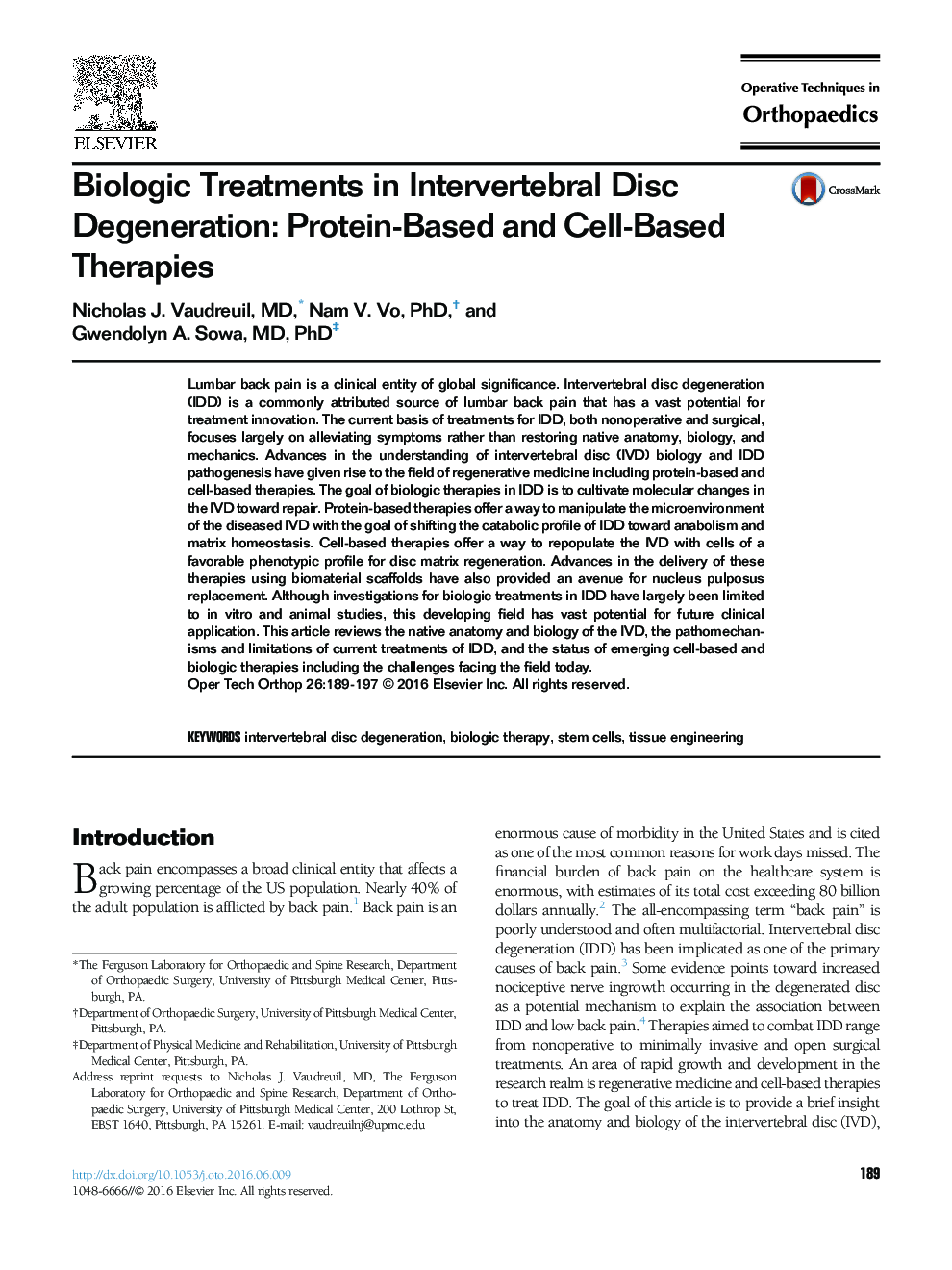| Article ID | Journal | Published Year | Pages | File Type |
|---|---|---|---|---|
| 4078745 | Operative Techniques in Orthopaedics | 2016 | 9 Pages |
Lumbar back pain is a clinical entity of global significance. Intervertebral disc degeneration (IDD) is a commonly attributed source of lumbar back pain that has a vast potential for treatment innovation. The current basis of treatments for IDD, both nonoperative and surgical, focuses largely on alleviating symptoms rather than restoring native anatomy, biology, and mechanics. Advances in the understanding of intervertebral disc (IVD) biology and IDD pathogenesis have given rise to the field of regenerative medicine including protein-based and cell-based therapies. The goal of biologic therapies in IDD is to cultivate molecular changes in the IVD toward repair. Protein-based therapies offer a way to manipulate the microenvironment of the diseased IVD with the goal of shifting the catabolic profile of IDD toward anabolism and matrix homeostasis. Cell-based therapies offer a way to repopulate the IVD with cells of a favorable phenotypic profile for disc matrix regeneration. Advances in the delivery of these therapies using biomaterial scaffolds have also provided an avenue for nucleus pulposus replacement. Although investigations for biologic treatments in IDD have largely been limited to in vitro and animal studies, this developing field has vast potential for future clinical application. This article reviews the native anatomy and biology of the IVD, the pathomechanisms and limitations of current treatments of IDD, and the status of emerging cell-based and biologic therapies including the challenges facing the field today.
